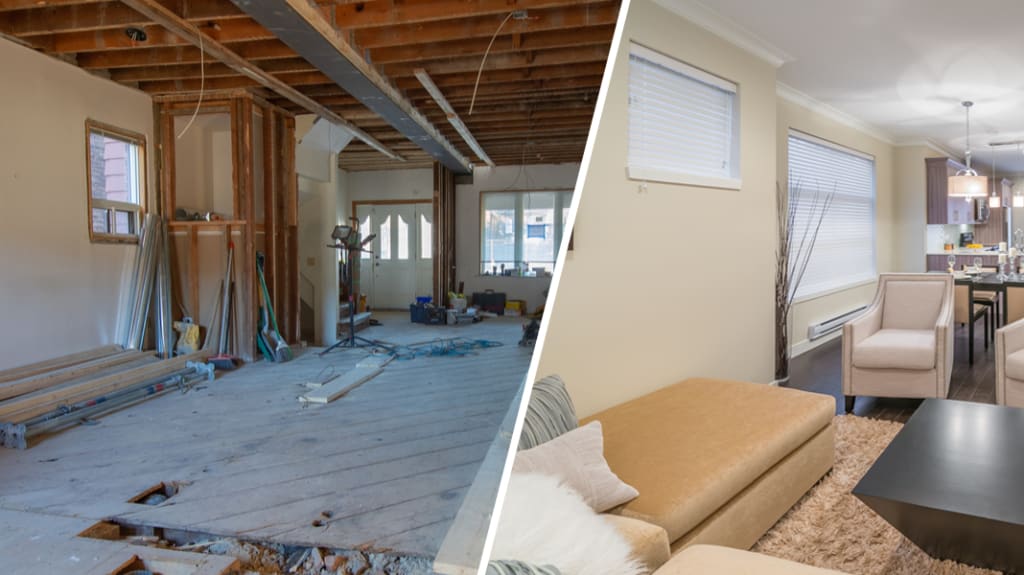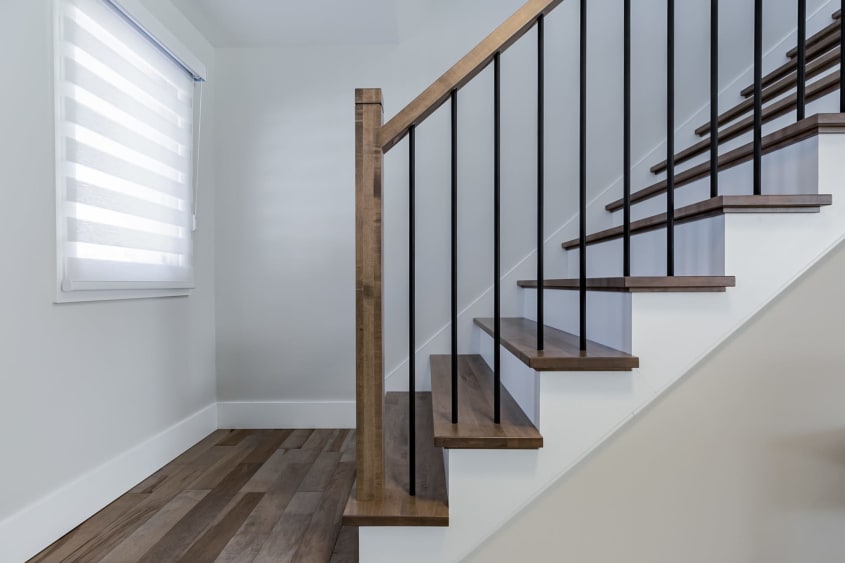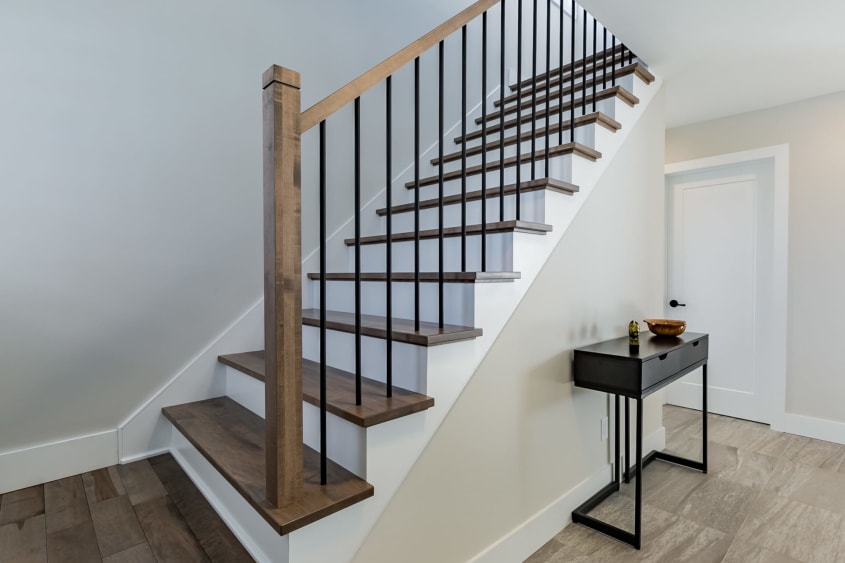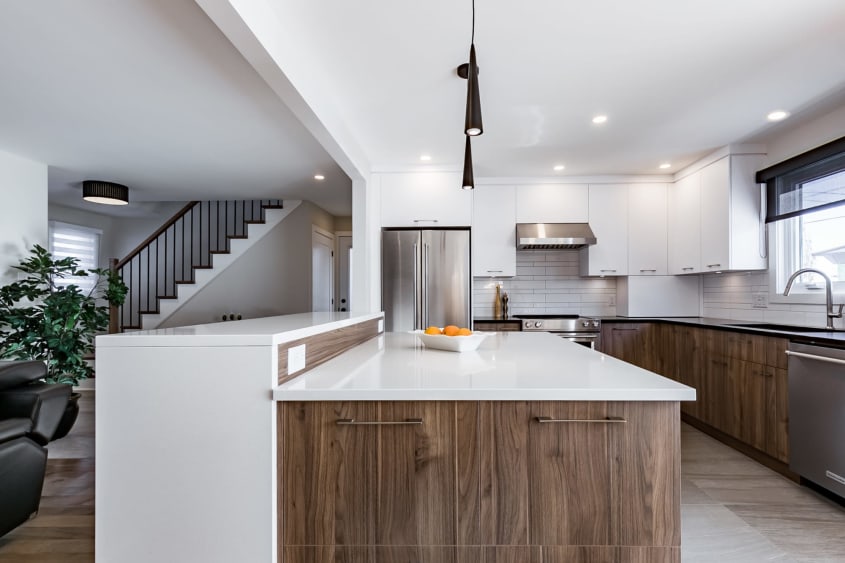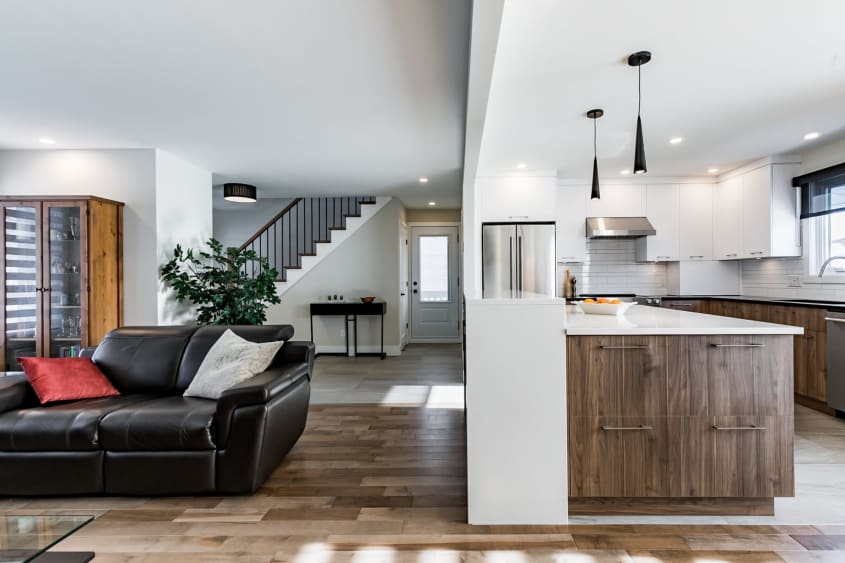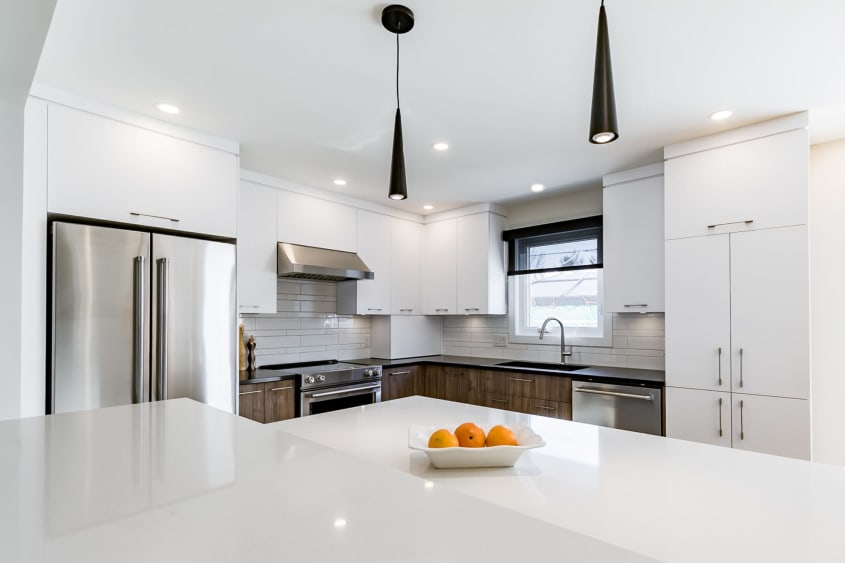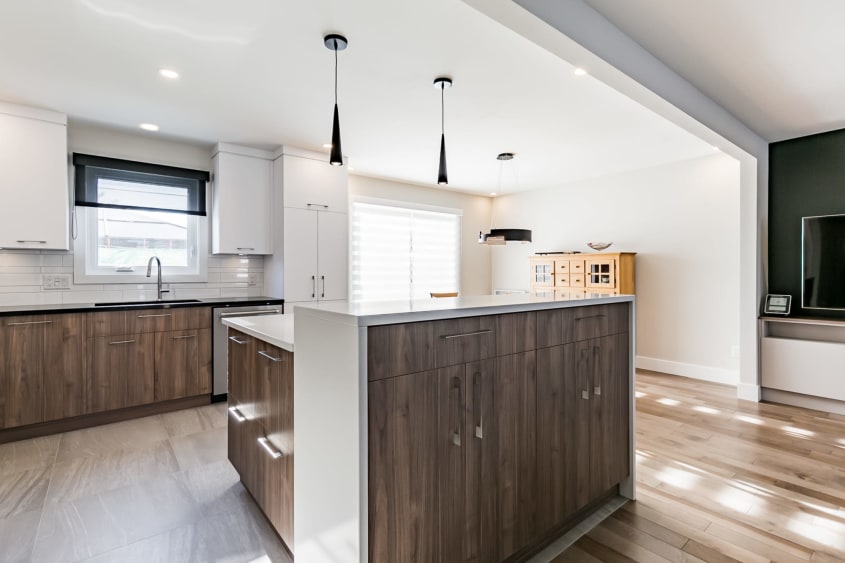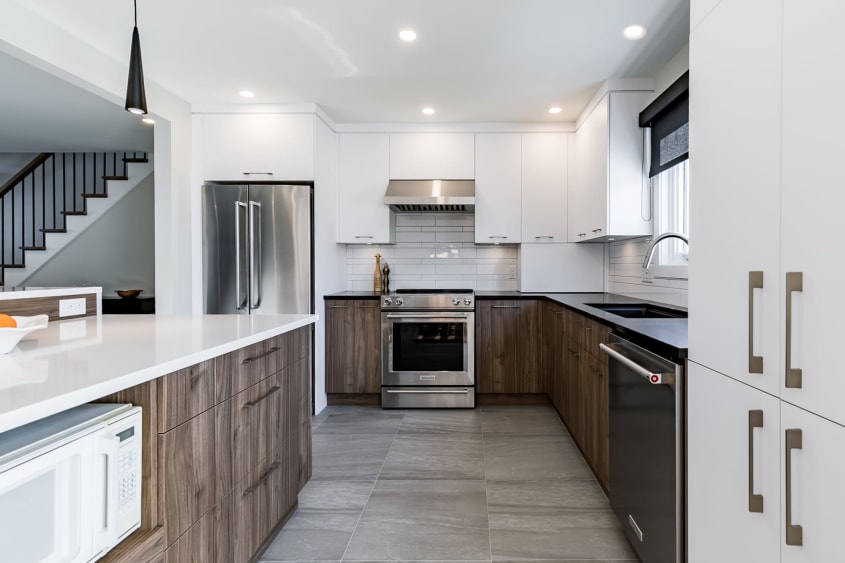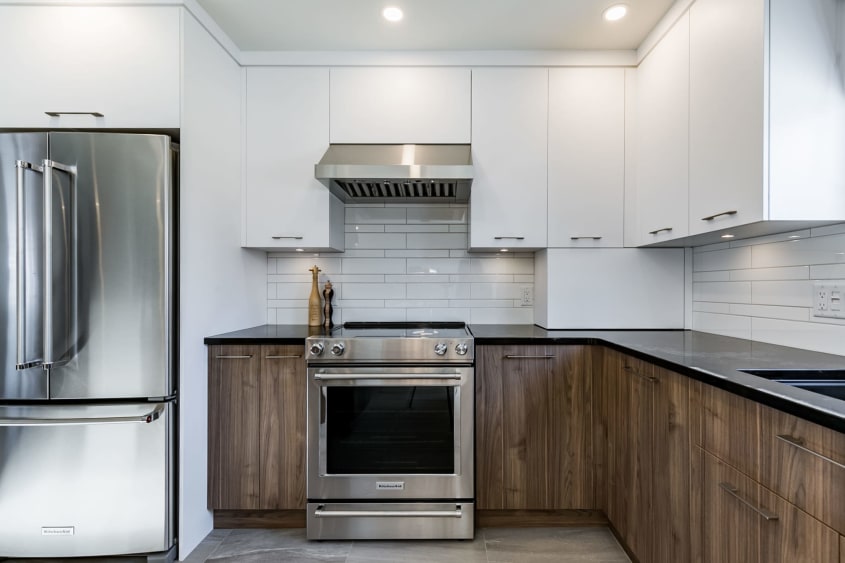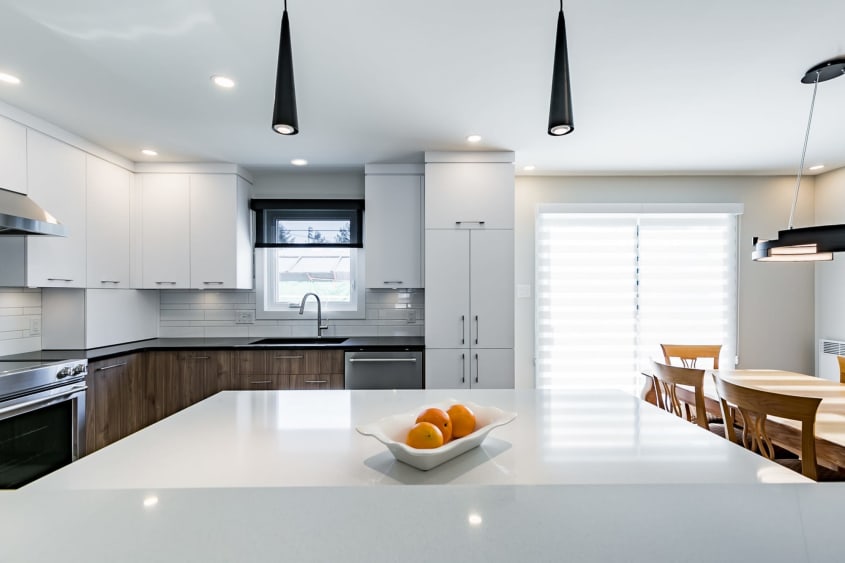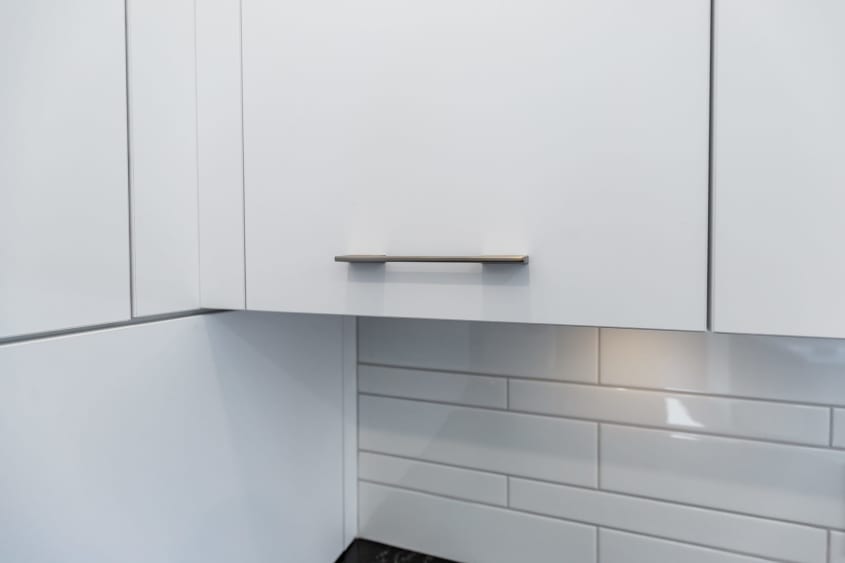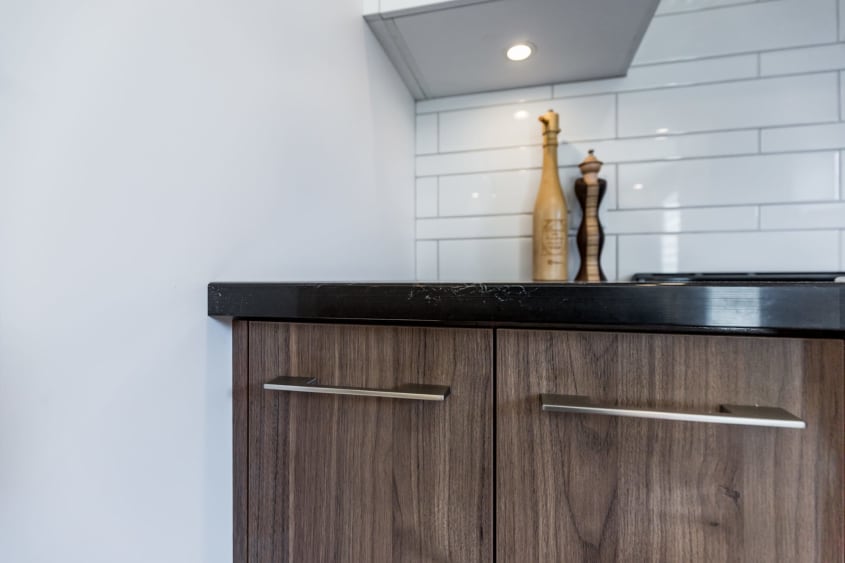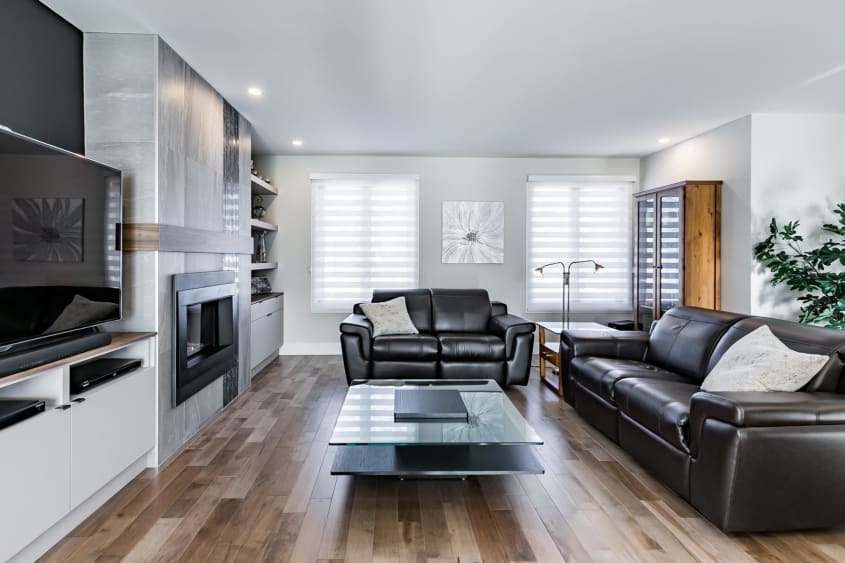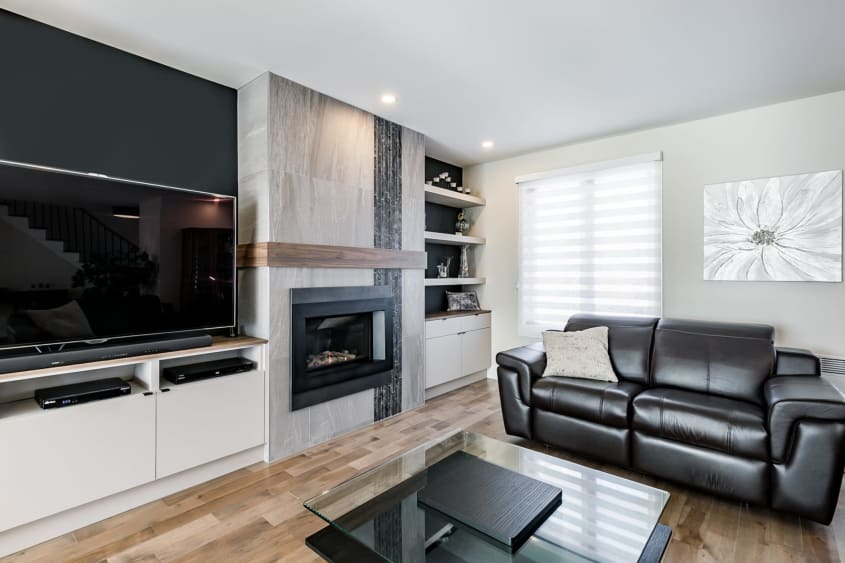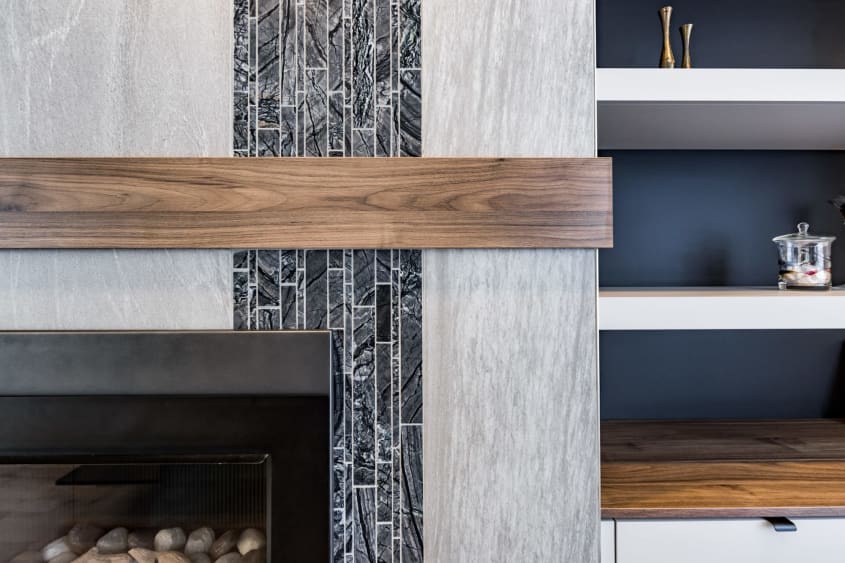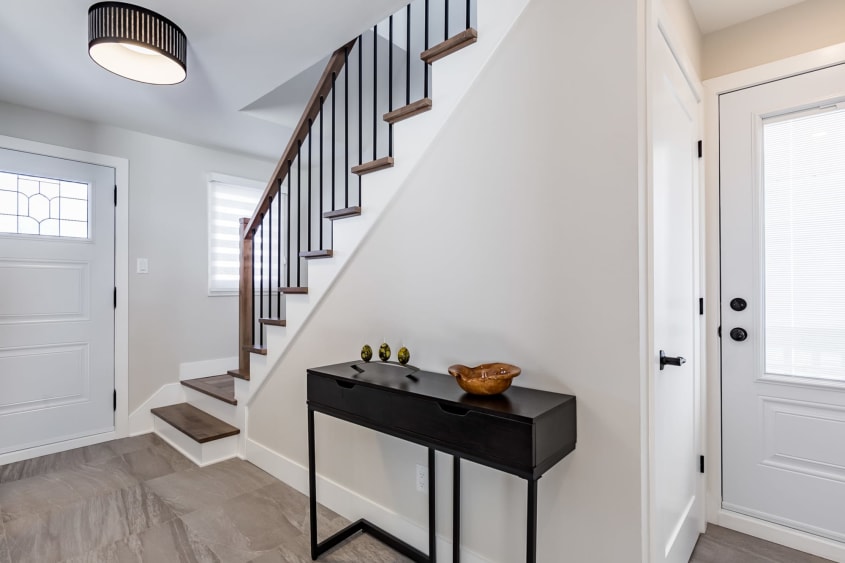As the needs of your household change, thoughts of selling your home may arise. You do not have to take that route, however, if you are not smitten on the idea of selling. Instead, you can bring your home design in line with the needs of your household with a full house renovation. This process goes beyond a one room remodel to fully alter the layout and function of your home.
Reasons to Renovate Rather Than Upgrade
Across Canada, more than 56% of homeowners elect to renovate their home rather than sell as their household needs change. Like these individuals, you may feel unwilling to leave your current home due to your desire to stay in the neighborhood. The choice to move becomes especially difficult if you live near close friends, family and neighbors. Or if you prefer your work commute or like your neighborhood schools.
Even if you do choose to sell, you will still have to perform the right level of repairs and renovations to prepare your home for the market. Otherwise, it could sit on the market for a long time and even sell for far less than it could have. Living through a major remodel is no easy feat, however. You have to look at what goes into it and weigh the pros and cons to make the best choice for your household.
A Look at What Goes into a Major Remodel
You can fully renovate the house you live in to avoid having to move – or you can purchase a new home and remodel that space before moving in. Major renovations tend to involve the overhaul of the entire home, inside and out, though the scope varies from project to project. Some full home remodels start with the demolition of the entire interior space to create – for instance – an open concept floor plan, while others address certain areas in a more precise manner.
Your design preferences and the exact needs of your household will greatly influence the scope of your renovation project. As your family grows, you may choose to perform a full kitchen renovation to improve your workflows and make the space more efficient overall. You could also go with a basement finishing project to expand your living space and bring that area up to date. Improving the flow and function of your bathrooms, bedrooms and other living spaces may also need to occur to align your home with the needs of everyone who lives there.
By addressing these areas one after another, or all at the same time, you take your project to the next level by turning it into a full house renovation. With either arrangement, there are many benefits and drawbacks to consider before moving forward with a project of this scope.

Benefits and Drawbacks of Remodeling Your Whole House
When you choose to remodel your whole house, rather than sell and move, you can align its form and function with the needs of everyone in your household. You can work with qualified architects and designers to redesign each room, and get skilled contractors to use your preferred finishes and add all the right features to your home.
Performing the full house renovation all at once, instead of piecing it all together slowly, can also prove beneficial. Your contractors will ensure you can create a cohesive design from the start – and use the floorplan to guide your entire project. With this approach, you can create a custom home design that works for your household better than any other on the market ever could. And you will save time and money on labor by doing it all at once.
Living in the house while it is being fully remodeled can feel much like living in a construction site, however. You will have to organize your daily life around each phase of the full house renovation process. During the excessively dusty demolition phase, you may even need to find alternative housing for a short time.
Furthermore, throughout the renovation, you will have your general contractor and their subcontractors coming and going all throughout the day. The increased foot traffic and noise could cause a lot of disruptions to your normal daily activities as a result. Taking these areas into consideration, and creating a plan to overcome the challenges, can help you decide if a full house renovation will work for your household.
Home Renovations That Offer the Best Return on Investment
Your full house renovation will undoubtedly bring its design and function up to your standards. When it comes to actual monetary value, however, not all renovations offer the same level of return on the investment you make. Some renovations provide a higher return on investment
Here are renovation projects that offer a solid ROI:
Exterior siding & insulation– Depending on how old your home is, it’s important to ensure its siding and insulation are in top shape. You wouldn’t want to invest thousands of dollars in indoor renovations and then have water infiltration because of poor quality siding and insulation. Plus, changing you home’s siding will give it a more modern, well-maintained look and is sure to sure to attract more buyers if you choose to sell.
Window and door upgrades – Similar to changing your exterior siding, changing your windows and doors will give your home a refreshed look, while being highly efficient. Older windows tend to be the opposite of energy efficient, thus making changing them well worth your money.
Roofing – Roofing is one of the most important elements of your home! Besides representing up to 30% of energy loss, if it is poorly maintained, water can easily make its way into your house & mold can form.
HVAC improvements – Improving or ensuring proper functioning of your home’s HVAC equipment is highly worth it. It’ll avoid any humidity issues in the long run (likely to cost a pretty penny), as well as save on energy bills. Plus, if you choose to change your home’s interior layout, you’re likely to need to relocate HVAC elements.
Single or double garage addition – Adding a garage adds convenience to your everyday life. Tired of removing the snow off your car in the winter? Or having to walk into an overheated car in the summer? Your day to day will become more pleasant with a garage addition. Plus, you can also finally have a dedicated space for your workshop or additional storage.
Room addition – The most common type of room addition is adding one above the garage. It’s great for additional living space as well as adds value to your home if most houses on your block have the same number of rooms (or less).
Basement finishing – Is your basement unfinished? Finishing it automatically provides your household with additional living space. Depending on your needs, you can also add a bathroom, laundry room, and more. This renovation is well worth the investment.
Kitchen and bathroom renovations – Your day-to-day is likely to improve with kitchen and/or bathroom renos. For your kitchen, you can improve its workflow with the help of a kitchen designer, and for both your bathroom and kitchen alike, you can update their looks. You’ll also be able to put in cabinetry (i.e. storage) where you believe is most effective for your household’s needs.
Painting and flooring – Although seemingly minor, painting lets future buyers know that you’ve properly maintained your home. Though, if you plan on staying, a simple paint job can drastically change the look and feel of a room. The same goes for flooring.

Renovations with Low ROI Potential
If you plan on renovating your home, but also plan on staying for many years to come, then you can surely renovate any room you’d like according to your needs and wants. However, if you plan on selling your property in the years to come, you might want to invest in renovations that provide a return. Here are the renovations our experts believe you should avoid if you choose to sell:
Home theatre, cellar – Although there was a time when everyone had a room dedicated to be a home theater or a cellar, they’re no longer in high demand – unless you’re in the luxury home market.
Hot tub, pool – Not everyone enjoys hot tubs or pools. And some might simply not want any at home. Heating a pool or hot tub also increases energy bills, which might drive potential buyers away.
Landscaping – Beautiful landscaping can surely give a great look to your home. However, not everyone has a green thumb, thus likely repelling some buyers. Of course, your property should be well maintained at all times, but no need to invest a substantial amount.
Tech – In most cases, converting your home into a ‘smart’ home and investing a lot in tech for the house costs much more than the amount of money you can make back. Buyers might be impressed by the cool tech in your home, but they won’t necessarily see it as something worth paying much more for.
Keeping things neutral is key. You might want your home to match the current trends, but not all trends stand the test of time! Make sure you make simple and well-worthy decisions. For instance, in the kitchen, opt for neutral cabinets and flooring. If you want to add some funky elements, feel free to do so with decorative elements or the room’s light fixtures. This not only allows for your personal touch, but also costs much less than unique cabinets, flooring or countertops.
Renovations that go against design trends or have too much of a custom feel rarely offer a good return on investment. The renovations must also match the type of house you would like to end up with. If you are not creating a luxurious, high-end design, you can leave out the theater room, skylights, pool and spa, high-tech smart features and solarium. You can always include your favorite features anyway, as long as you realize that the renovations may not offer a solid financial return.
Before you move forward, you should take an honest look at the structural integrity of the home to figure out if it is even worth the time and trouble to renovate. You can resolve many structural issues, however, with help from skilled structural engineers and contractors who have completed our thorough Verification process.

Costs of Each Phase of the Renovation Process
Each phase of the renovation process will cost a different amount that reflects the scope of the remodel and the quality of your finish materials. If you decide to finish the entire basement, for example, you can expect to pay around $40,000, while your kitchen renovation may cost about $28,000 to complete. Bathroom renovations tend to come in at $17,000 apiece on average.
When you turn your attention outdoors and replace your vinyl siding, it will run you around $21,000 if you add beautiful masonry facade as well. As the scope of your project grows, you should budget about $50,000 if you would like to add a single car garage and $33,000 for a lateral room addition. How much you need to address will directly influence the total cost of your full house remodel project. Take a look at our home renovation cost article to find industry average costs.
As you select where to direct your efforts, your expected project costs will start to come into focus. You can receive help in defining your expected full house renovation project costs by speaking with our Renovation Advisors. They will work with our Verified Contractors to get you up to three free quotes that reflect the scope of your project.

Steps to Completing Your Full House Renovation Project
Whether you do all the work at once, or one area at a time, full house renovation projects tend to follow the same key steps. The first phase tends to center around planning the scope of the project. You must determine where to focus your efforts and who will take on the project. This phase includes working with our Renovation Advisors to acquire help from qualified architect, technologists and/or structural engineers, followed by obtaining bids from our Verified Contractors. You can expect planning to go on for up to a year before your contractors can start the next steps.
Before your scheduled start date, your dedicated advisor will help you get the permits you need for your project, and then order the materials. Permits can take up to six weeks to arrive, so this process is usually started as early as possible.
With permits in hand, your contractors can then move onto the demolition phase that allows for the removal of all the old materials. They will handle the disposal of all the construction waste and try to keep dust to a minimum. As this process is the most disruptive to daily life, you may find it favorable to find alternate housing for the week or two it takes to clear out all the old materials.
If you want to reframe any part of the house or put in an addition, the framing process will occur next. Your contractor will then address any wiring, plumbing and ductwork repairs or upgrades that need to occur. They will continue by putting up and painting the drywall, placing flooring in every room and installing all the finish materials. Home renovation project timelines vary, but it tends to take around two to five months from the moment you’ve decided on your plans and obtained your permits.
Where You Should Start Your Full Home Remodel
The existing design of your home will greatly influence where you begin your renovations and the order in which the rest of the house is completed. Your contractors will look at who is living in your household, how they use each room and the availability of additional space for them to use.
If you have two bathrooms in your home, for example, your contractors will do one at a time to keep the other open for everyone to use. This does necessitate a brief return to the demolition phase for that space, but it is usually well worth it to keep your household running smoothly. You can also ask them to reinstall the toilet every night in one of the bathrooms if you choose to renovate both at the same time. Doing so will cost you a small fee.
As your contractor determines the optimal workflow for your full house renovation project, you can use that information to create your plans for handling the challenges ahead, including finding temporary alternative housing.
Select Between DIY and Hiring a Professional
While some home renovations are DIY-friendly, large-scale projects, including full house renovations, are generally not. You must have a strong working knowledge of building codes and permits, safe demolition practices, and construction techniques to pull off a large-scale home renovation project successfully.
When you hire a contractor, you do have to pay for their time and expertise in the form of a labor rate. This rate is usually 10% to 30% of the total project cost, but it is often well worth the price. These professionals ensure the success of your renovations by personally overseeing each phase of the project.
They hire and manage all subcontractors, including electricians and plumbers, to ensure the final result aligns with your vision for your fully-renovated home. They can even potentially save you money by using their connections to acquire materials at bulk prices. Attempting to DIY a full home renovation could prove disastrous, so it is wise to go with a professional from the start.
Are You Ready to Begin Your Full Home Renovations?
With all the above considerations in mind, you can decide if it is time to complete your full home renovation project – or if you would rather sell and move. If you would like to move forward with your renovations, you can acquire the support you need from our Renovation Advisors. We will help you find the best home renovation expert for the job and have three qualified professionals submit bids for your project. You can select from the Verified Contractors to find a trusted expert who will help you transform your house into the home of your dreams. Appelez-nous today or fill out our form to get started! Our service is at no cost, no obligation to you.
Happy Renovations Start Here.

